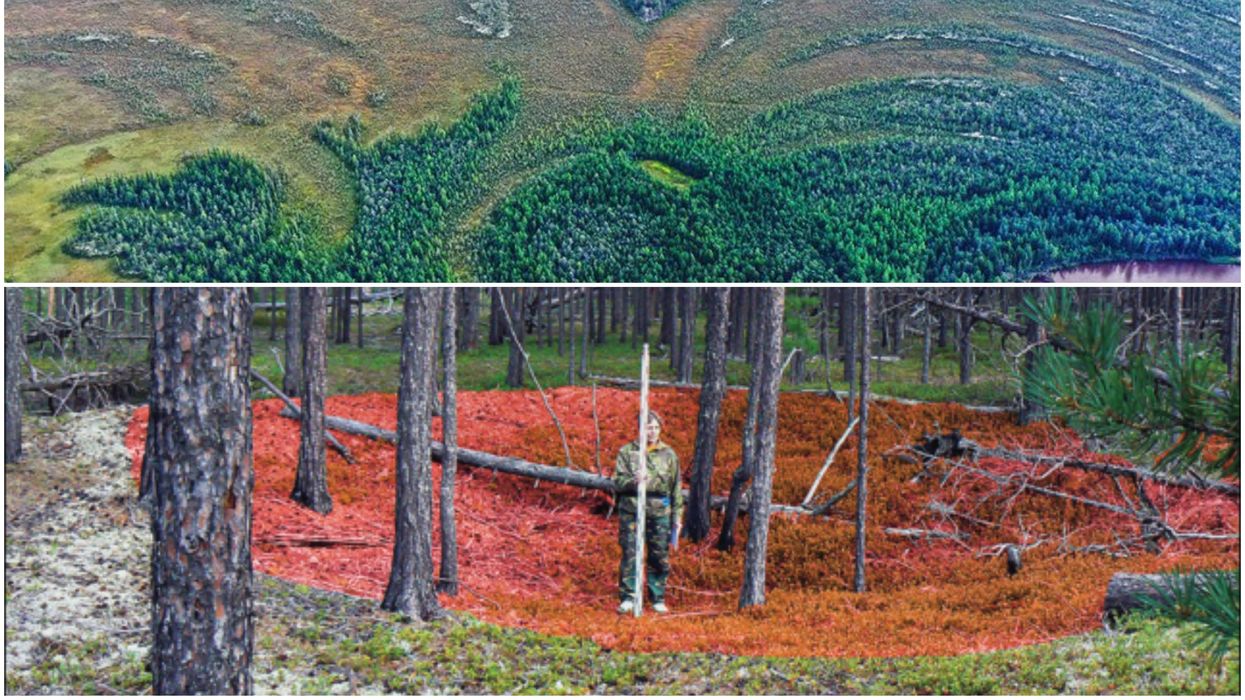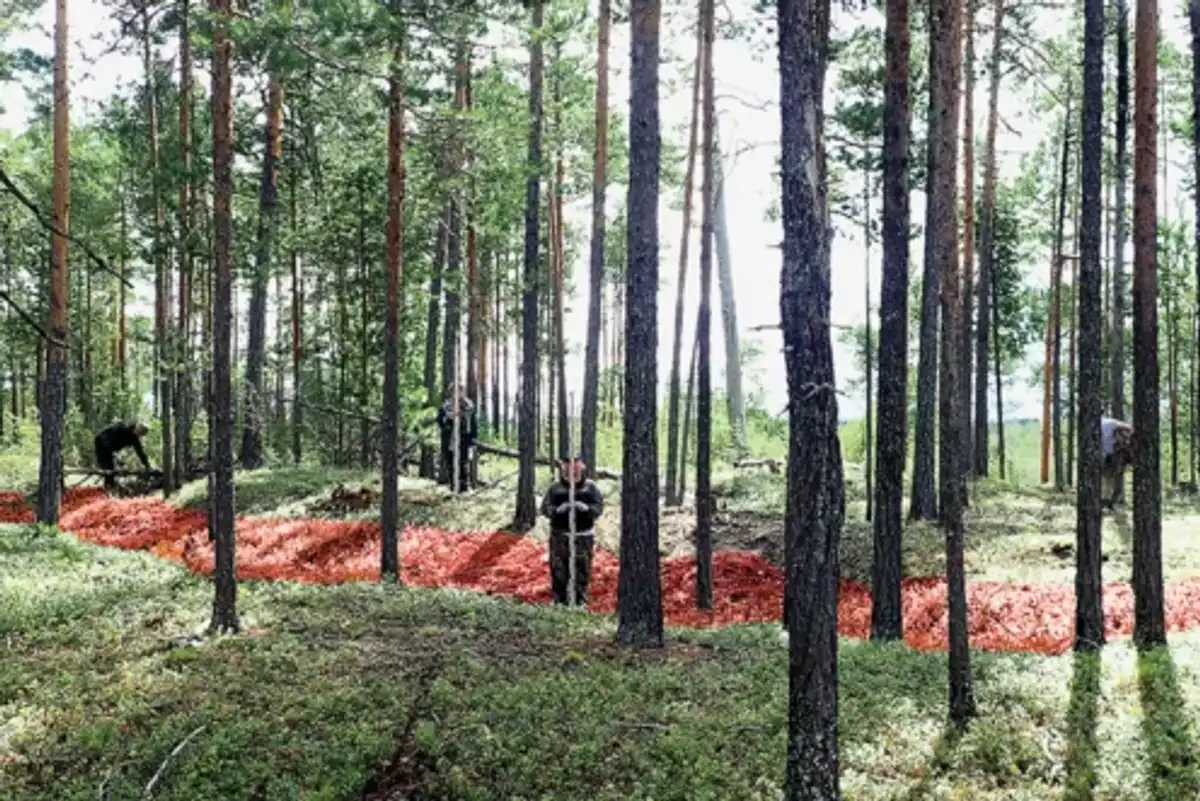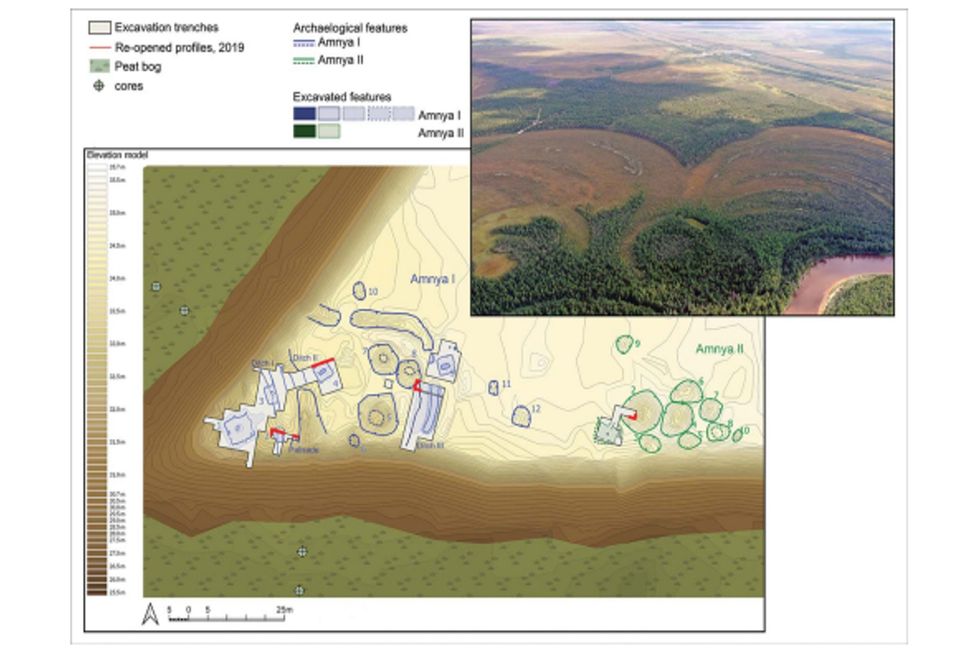Science & Tech
Harriet Brewis
Sep 15, 2025

Top: An aerial view of the land surrounding the Amnya site; bottom: a researcher stands where an ancient pit house once lay
(E. Dubovtseva via Henny Piezonka et al/Cambridge University Press)
Scientists have dated the earliest-known fortified settlement built by humans, and they were stunned by the identity of its architects.
The fortifications were first unearthed near the Amnya River in Western Siberia back in 1987, but it’s only thanks to recent radiocarbon dating that we know just how old they are.
The testing revealed that a pit house at the site, which was once protected by a ditch, was most likely built in the final century of the seventh millennium BCE.
In other words, it’s some 8,000 years old.
Later, in the sixth millennium BCE, another two ditches were built at the site, along with several more buildings, banks, and fences, Science Alert reports.
The most significant thing about these discoveries is that they have challenged experts’ understanding of what our ancestors were capable of.

Whilst, previously, it was assumed that Stone Age farming communities were the first to build permanent settlements, accompanied by defensive structures, the Amnya sites show this wasn’t the case.
Hunter-gatherer groups were behind these ancient buildings, an international team of archaeologists concluded, proving that these foragers were more advanced than they’re given credit for.
“Our new examinations reveal that inhabitants of Western Siberia led a sophisticated lifestyle based on the abundant resources of the taiga (swampy forest) environment," Tanja Schreiber, one of the researchers behind the discovery, said in a statement.
The prehistoric inhabitants of the Amnya River benefited from a rich ecosystem, with an abundance of fish, birds, elk and reindeer to hunt.
Once they’d learned how to store these resources – crafting elaborately decorated pottery to preserve them – they must have realised that they were a target for raiders, and so built defences to protect them, Schreiber and her colleagues suggested in a paper on their findings.

Around 10 Stone Age fortified sites are known to date, featuring pit houses surrounded by earthen walls, but none are as old as the first Amnya site.
Indeed, so far, the only comparable sites we know of cropped up centuries later, after the dawn of agriculture.
However, this discovery disproves the notion that agriculture and animal farming were prerequisites for establishing complex societies.
Amnya, along with other examples – including the Göbekli Tepe megalith built in present-day Turkey around 11,00 years ago – suggest that societies didn’t develop from simple to complex in such a linear way.
“The findings underscore the diversity of pathways that led to complex societal organisations,” Japhet Johnstone, of the Free University of Berlin, wrote in a piece about the landmark research.
“They also highlight the significance of local environmental conditions in shaping the trajectories of human societies.”
In other words, we need to rethink our grunting, boorish image of early hunter-gatherers and give them the kudos they’re due.
This article was originally published on 18 December 2023
Sign up for our free Indy100 weekly newsletter
Have your say in our news democracy. Click the upvote icon at the top of the page to help raise this article through the indy100 rankings
Top 100
The Conversation (0)













